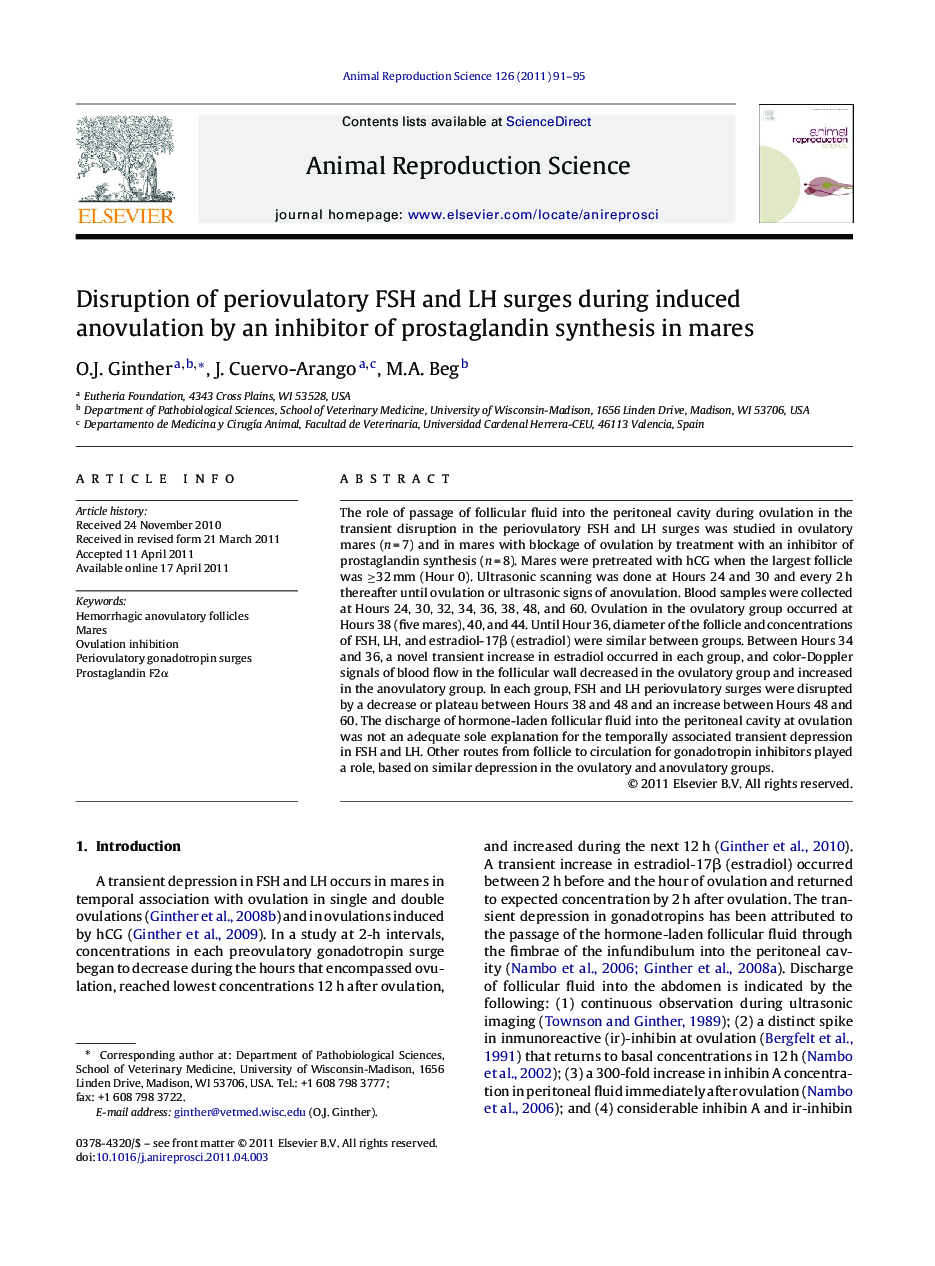| Article ID | Journal | Published Year | Pages | File Type |
|---|---|---|---|---|
| 2073419 | Animal Reproduction Science | 2011 | 5 Pages |
Abstract
The role of passage of follicular fluid into the peritoneal cavity during ovulation in the transient disruption in the periovulatory FSH and LH surges was studied in ovulatory mares (n = 7) and in mares with blockage of ovulation by treatment with an inhibitor of prostaglandin synthesis (n = 8). Mares were pretreated with hCG when the largest follicle was â¥32 mm (Hour 0). Ultrasonic scanning was done at Hours 24 and 30 and every 2 h thereafter until ovulation or ultrasonic signs of anovulation. Blood samples were collected at Hours 24, 30, 32, 34, 36, 38, 48, and 60. Ovulation in the ovulatory group occurred at Hours 38 (five mares), 40, and 44. Until Hour 36, diameter of the follicle and concentrations of FSH, LH, and estradiol-17β (estradiol) were similar between groups. Between Hours 34 and 36, a novel transient increase in estradiol occurred in each group, and color-Doppler signals of blood flow in the follicular wall decreased in the ovulatory group and increased in the anovulatory group. In each group, FSH and LH periovulatory surges were disrupted by a decrease or plateau between Hours 38 and 48 and an increase between Hours 48 and 60. The discharge of hormone-laden follicular fluid into the peritoneal cavity at ovulation was not an adequate sole explanation for the temporally associated transient depression in FSH and LH. Other routes from follicle to circulation for gonadotropin inhibitors played a role, based on similar depression in the ovulatory and anovulatory groups.
Related Topics
Life Sciences
Agricultural and Biological Sciences
Animal Science and Zoology
Authors
O.J. Ginther, J. Cuervo-Arango, M.A. Beg,
